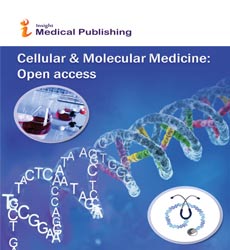Abstract
Clinical pharmacist's intervention and its acceptance rate in the Pediatric Ward of Jimma University Medical Center, South West Ethiopia
Background: Drug therapy problem is associated with morbidity, mortality, increased hospital stay and reduced quality of life. Moreover, pediatric patients are quite susceptible to drug therapy problems. Clinical pharmacist services had a positive impact on pediatric patient care.
Objective: To assess the prevalence of drug therapy problem, the activities of clinical pharmacists and its acceptance rate at pediatric ward of Jimma university medical center.
Method: A hospital-based cross-sectional study was conducted in the pediatric ward of Jimma University Medical Center from April 01 to June 30, 2018. The collected data were classified according to Pharmaceutical care network Europe version 5.0. Data were entered into Epi data version 4.0.2 and then exported to statistical software package version 21.0 for analysis. To identify predictors of drug therapy problems occurrence, multiple stepwise backward logistic regression analysis were done. The 95% CI was used to show the accuracy of data analysis and statistical significance was considered at P <0.05.
Results: From a total of 304 patients included in the study, nearly three fourth of them had at least on drug therapy problem per patient. A total of 356 pharmaceutical interventions were performed in the studysetting. Dosing problem 112(31.46%) and drug choice problem101(28.37%) were the predominantly identified drug therapy problem. The most important interventions provided was adherence and counseling (22.75%) followed by change of medication (13.76%). The acceptance rate of clinical pharmacist intervention was (79.49%). Type of admission(transferred)[AOR=1.85, 95% CI= (1.05-3.28)] and Number disease conditions [two diseases AOR=2.60, 95% CI= (1.25-5.39)],(three diseases AOR=4.26,95% CI=(1.95- 9.27)and (More than four dsiases AOR=6.92, 95% CI= (287-16.68) were independent predictors of drug therapy problem occurrence.
Author(s): Desalegn Feyissa Mechessa
Abstract | Full-Text | PDF
Share this

Google scholar citation report
Citations : 187
Cellular & Molecular Medicine: Open access received 187 citations as per google scholar report
Abstracted/Indexed in
- Google Scholar
- China National Knowledge Infrastructure (CNKI)
- Cosmos IF
- Geneva Foundation for Medical Education and Research
- Secret Search Engine Labs
Open Access Journals
- Aquaculture & Veterinary Science
- Chemistry & Chemical Sciences
- Clinical Sciences
- Engineering
- General Science
- Genetics & Molecular Biology
- Health Care & Nursing
- Immunology & Microbiology
- Materials Science
- Mathematics & Physics
- Medical Sciences
- Neurology & Psychiatry
- Oncology & Cancer Science
- Pharmaceutical Sciences

